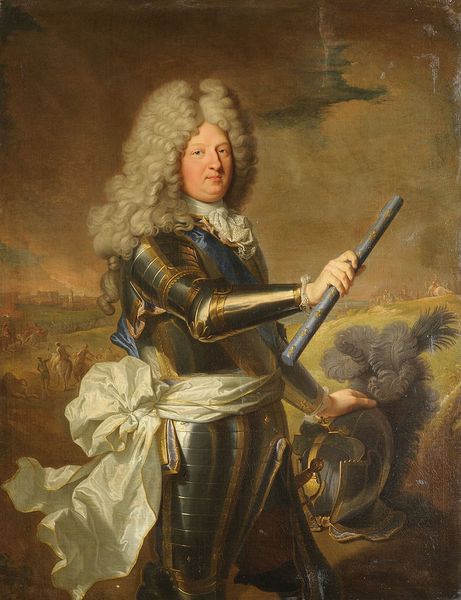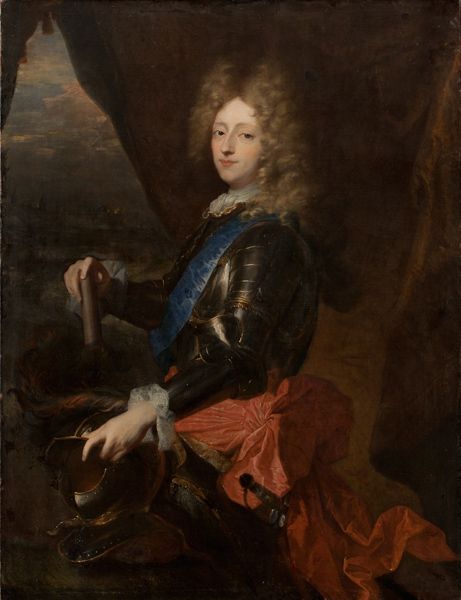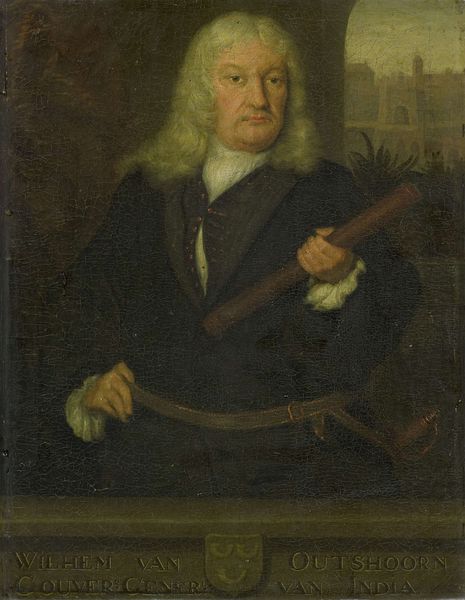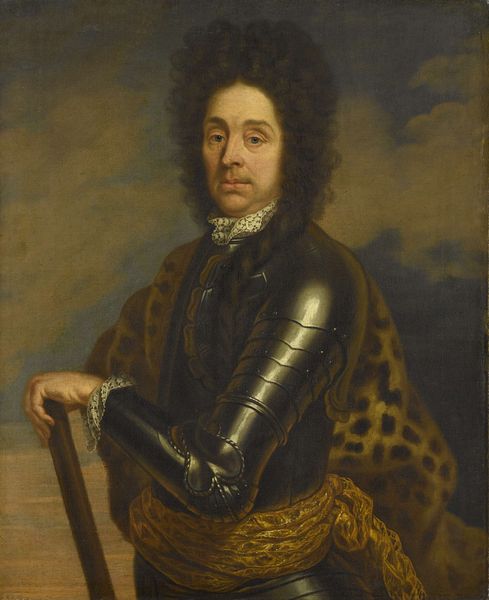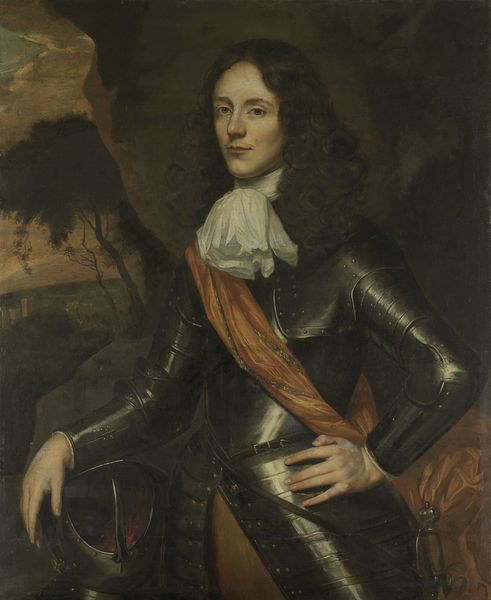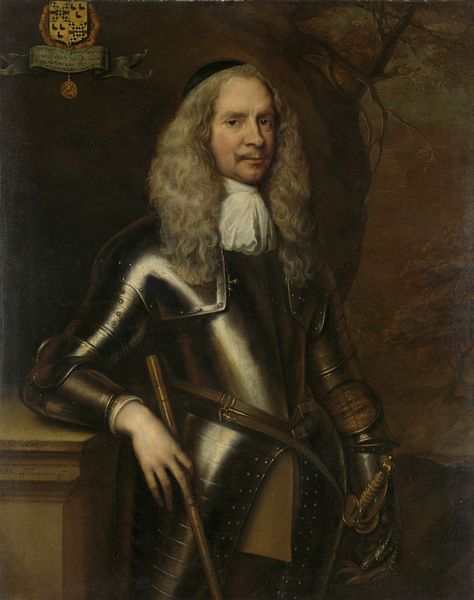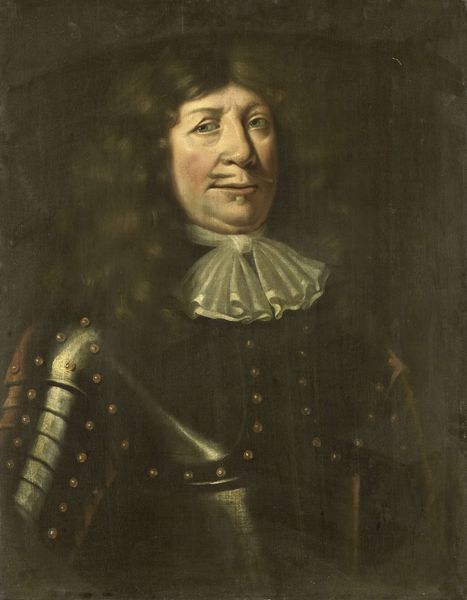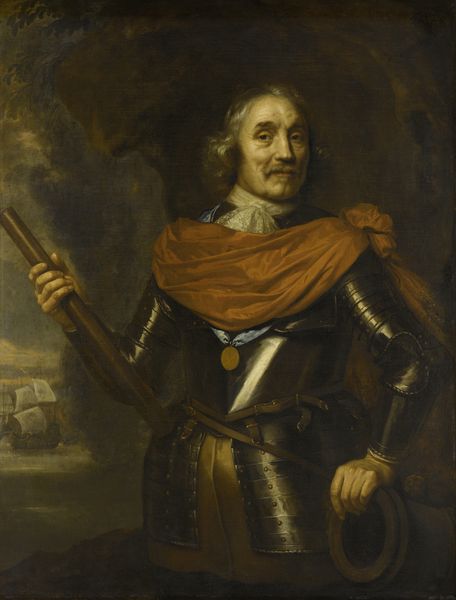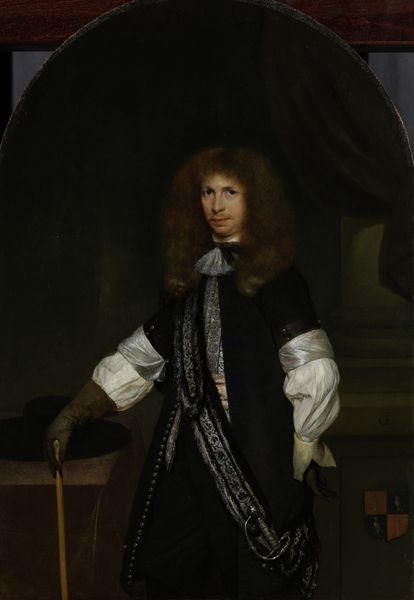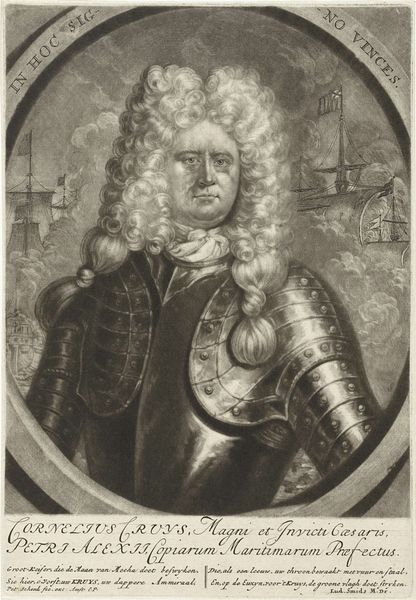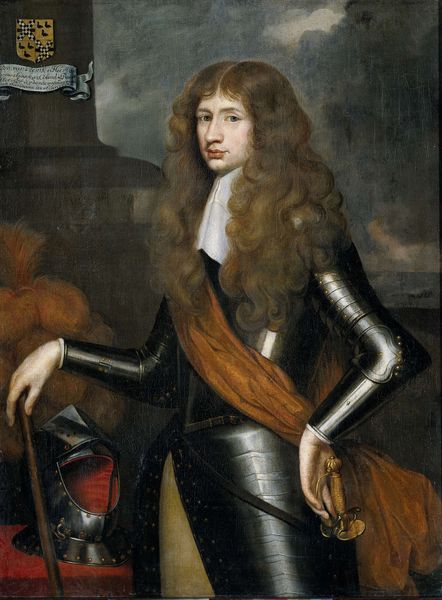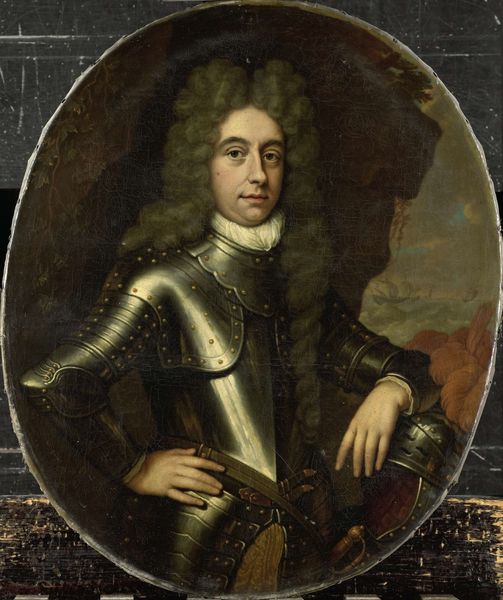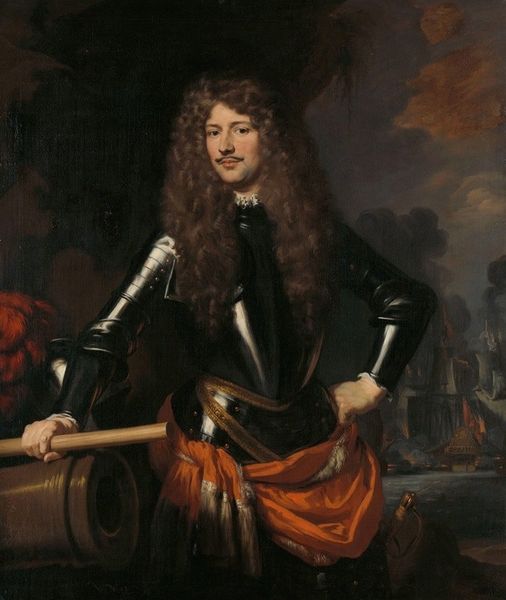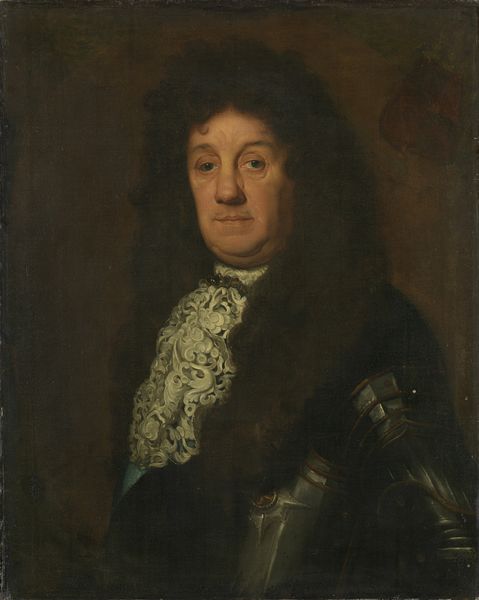
Portrait of Lieutenant-General Godard van Reede, Lord of Amerongen 1690 - 1703
0:00
0:00
painting, oil-paint
#
portrait
#
character portrait
#
baroque
#
painting
#
oil-paint
#
genre-painting
#
history-painting
Dimensions: height 130 cm, width 101 cm, depth 11 cm
Copyright: Rijks Museum: Open Domain
Editor: Here we have Adriaen van der Werff's oil painting, "Portrait of Lieutenant-General Godard van Reede, Lord of Amerongen," made sometime between 1690 and 1703. He looks…impressive, formidable even. It’s the armour, perhaps? What else do you see in this piece? Curator: I see a carefully constructed image intended to project power and legitimacy during a period of significant political and social change. Consider the context: this is a Dutch nobleman, likely painted during or shortly after the Williamite War in Ireland. How do you think the political climate might have influenced this portrait's reception? Editor: So, this wasn't just about capturing his likeness but also about making a statement? Curator: Precisely! The choice of armour, the carefully arranged drapery, even the landscape in the background—these are all visual cues designed to communicate status and authority. Think about the role of patronage here. Van Reede, by commissioning this portrait, is actively participating in the construction of his own historical narrative. It also subtly reminds the viewer of Dutch military prowess. Editor: It’s interesting how the portrait almost becomes a form of propaganda. But is that typical for portraits from this era? Curator: Certainly, portraiture in this period often served a propagandistic function, particularly for individuals involved in politics or the military. Artists were keenly aware of their role in shaping public perception and worked closely with their patrons to craft images that conveyed specific messages. The Rijksmuseum’s acquisition and display of such works contribute to our understanding of the complex interplay between art, power, and history. Editor: I had never thought about a portrait being part of some active dialogue that engages in broader cultural discourse. Curator: Indeed. By looking closely, we can unlock layers of meaning related to societal values, political power, and individual identity in the late 17th and early 18th centuries. Editor: Well, this has totally changed the way I will approach art and how it represents the subject in that specific moment of history. Thank you!
Comments
No comments
Be the first to comment and join the conversation on the ultimate creative platform.
